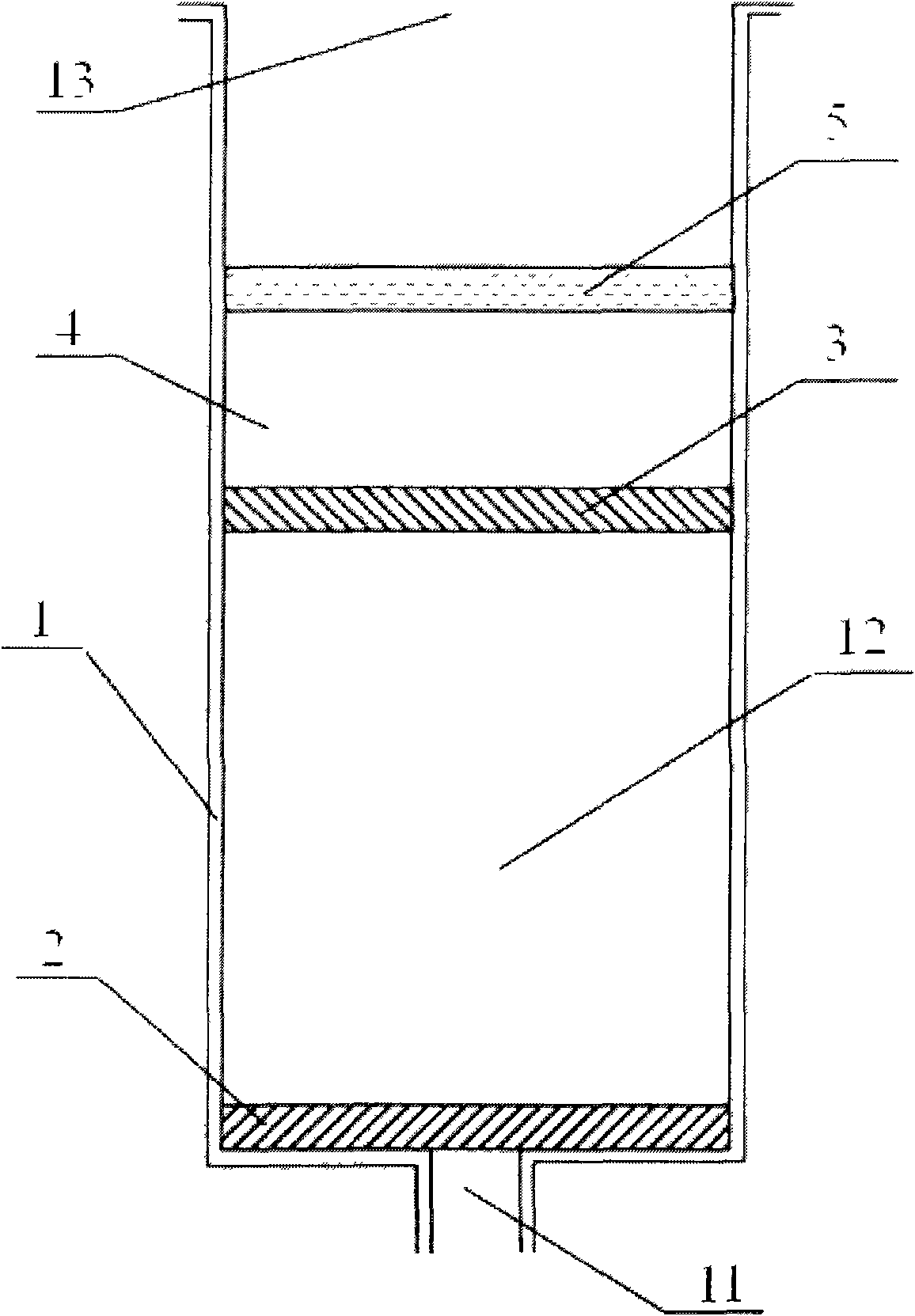Medicament extracting device and method from body fluid example
A technology for biological fluids and extraction devices, which is applied in the preparation of test samples, measurement devices, chemical instruments and methods, etc., can solve the problem of affecting sensitivity, difficult to achieve liquid-liquid extraction or solid-phase extraction, and difficult to achieve high-throughput automated operation. And other issues
- Summary
- Abstract
- Description
- Claims
- Application Information
AI Technical Summary
Problems solved by technology
Method used
Image
Examples
Embodiment 1
[0063] A method for extracting medicines in biological fluid samples, comprising the steps of:
[0064] 1. Add the sample into the extraction device; the adsorption material filled in the tubular column of the extraction device includes: styrene-divinylbenzene copolymer containing sulfonic acid groups and styrene-divinylbenzene copolymer, the weight of the two The ratio is 1:9, the particle size of the adsorption material is 5 microns, and the pore size is 60
[0065] 2. Add methanol and let it stand for 1 minute; the volume ratio of sample, adsorption material and methanol is 1:1:10;
[0066] 3. By pressurizing the inlet end of the tubular cylinder of the extraction device, the solution flows into the inlet end, passes through the adsorption material, and then flows out from the outlet end at a flow rate of 0.2 mL per minute. The effluent is used for further analysis and detection.
Embodiment 2
[0068] A method for extracting medicines in biological fluid samples, comprising the steps of:
[0069] 1. Add the sample to the extraction device; the adsorption material filled in the tubular column of the extraction device includes: styrene-divinylbenzene copolymer containing carboxylic acid groups and alkane substitution and alkane-substituted styrene-divinylbenzene copolymer matter, the weight ratio of the two is 2:8, the particle size of the adsorption material is 30 microns, and the pore size is 100
[0070] 2. Add ethanol and let it stand for 2 minutes; the volume ratio of sample, adsorption material and ethanol is 3:1:12;
[0071] 3. By applying vacuum from the outlet end of the tubular cylinder, the solution flows into the inlet end, passes through the adsorption material, and flows out from the outlet end at a flow rate of 0.6mL per minute, and the effluent is taken for further analysis and detection.
Embodiment 3
[0073] A method for extracting medicines in biological fluid samples, comprising the steps of:
[0074] 1. Add the sample to the extraction device; the adsorption materials filled in the tubular column of the extraction device include: styrene-divinylbenzene copolymers containing phosphoric acid groups and lipid groups and styrene-divinylbenzene copolymers containing amide groups Benzene copolymer, the weight ratio of the two is 3:7, the particle size of the adsorption material is 60 microns, and the pore size is 150
[0075] 2. Add acetonitrile and let it stand for 3 minutes; the volume ratio of sample, adsorption material and acetonitrile is 5:1:10;
[0076] 3. Through its own gravity, the solution flows into the inlet port, and flows out from the outlet port after passing through the adsorption material. The flow rate is 1mL per minute, and the effluent is taken for further analysis and detection.
PUM
| Property | Measurement | Unit |
|---|---|---|
| Particle size | aaaaa | aaaaa |
| Aperture | aaaaa | aaaaa |
| Aperture | aaaaa | aaaaa |
Abstract
Description
Claims
Application Information
 Login to View More
Login to View More - R&D Engineer
- R&D Manager
- IP Professional
- Industry Leading Data Capabilities
- Powerful AI technology
- Patent DNA Extraction
Browse by: Latest US Patents, China's latest patents, Technical Efficacy Thesaurus, Application Domain, Technology Topic, Popular Technical Reports.
© 2024 PatSnap. All rights reserved.Legal|Privacy policy|Modern Slavery Act Transparency Statement|Sitemap|About US| Contact US: help@patsnap.com









